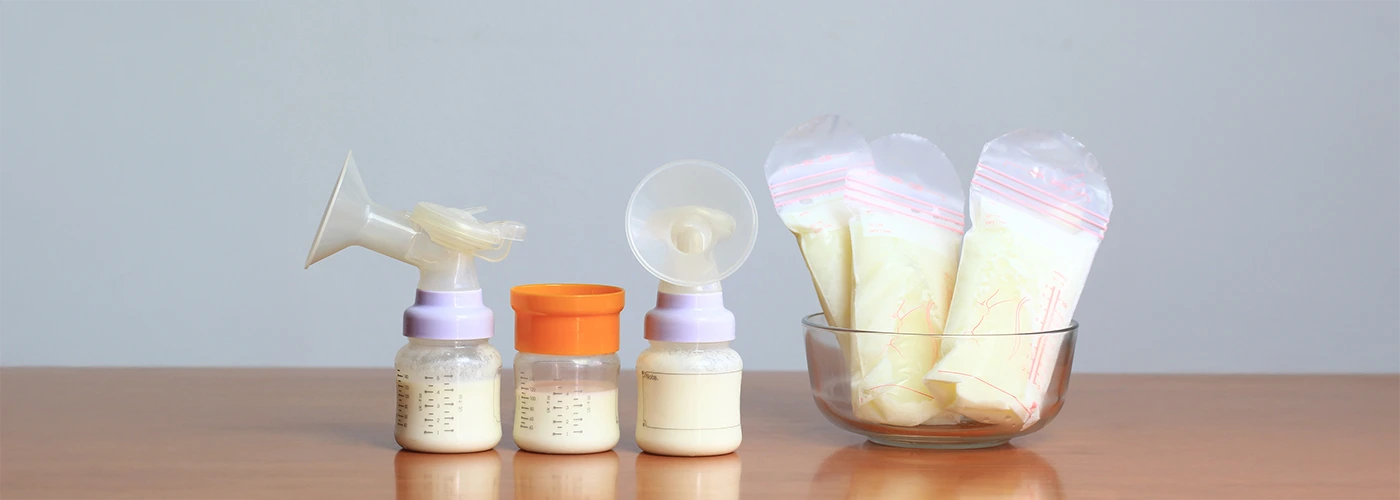Topics
Breastfeeding is a crucial part of a baby’s early development, and for various reasons, some mothers may need to express breast milk using a breast pump. It is important to understand how frequently you can pump breast milk to ensure both your comfort and your baby’s nutritional needs are met.
1. When to start pumping breast milk for working mothers?
The timing to start pumping breast milk depends on your circumstances and goals. It is typically recommended to wait until breastfeeding is well established, around three to four weeks after birth, but individual situations may vary. Common reasons to start pumping include returning to work, medical reasons (like the baby being unable to latch successfully), building a milk stash, or supplementing breastfeeding.
2. When is it too early to pump breast milk?
Pumping breast milk too early might result in oversupply or disrupt your baby’s eating pattern. It is typically advised to wait until your milk production is firmly established, usually three to four weeks following birth. This allows your baby to develop a good latch and feeding routine. Early pumping may also cause discomfort as your breasts may be engorged.
3. How many times can I pump breast milk in a day?
In the early weeks, you may aim to pump about 8 to 12 times daily, including at night. As your baby grows, your milk supply may stabilise, and you can gradually reduce the frequency of pumping sessions. Keep in mind that frequent pumping is essential in establishing and maintaining a robust milk supply.
4. How long should I pump per session?
A typical pumping session usually lasts about 15 to 20 minutes per breast. However, individual factors such as milk flow and comfort level may vary. Ensure to empty your breasts as much as possible during each session to maintain or increase your milk supply.
5. How often can I pump when breastfeeding?
The frequency of pumping while breastfeeding depends on your individual circumstances and goals:
- If you are exclusively breastfeeding and want to build a stash or occasionally supplement, you can add one or two pumping sessions per day.
- If you are returning to work, plan to pump as often as your baby would feed, typically every two to three hours. To increase milk supply, consider adding extra pumping sessions between breastfeeding.
It is crucial to listen to your body and seek guidance from a lactation consultant or healthcare provider for a personalised pumping schedule.
6. How long should I wait between pumping breast milk?
It is generally recommended to wait for an hour between breastfeeding and pumping to allow your breasts to refill and avoid interfering with your baby’s feeding. However, this can vary depending on individual circumstances. Some mothers may pump immediately after breastfeeding to build a stash of breastmilk.
7. Is pumping every two hours enough?
Pumping every two hours may be necessary in the early days to establish a good milk supply, especially if your baby is not latching well. This frequent pumping can help signal your body to produce more milk. However, it can be physically demanding, so taking care of yourself and resting when possible is essential.
As your baby grows, you may be able to space out your pumping sessions to every 3-4 hours. Pay attention to your baby’s cues and your comfort level to determine the best pumping schedule.
8. How much milk should I get if I pump every two hours?
The amount of milk you can expect to pump every two hours can vary widely among individuals. Initially, you may pump only a small amount, but this should gradually increase as your milk supply builds. On average, pumping about one to two ounces (30-60ml) per breast per session is considered normal in the first few weeks.
9. How often should I pump to increase milk supply?
To increase milk production through pumping, aim for about 8-12 pumping sessions per day, including overnight, to mimic a newborn’s feeding frequency.
Empty both breasts during each session, typically pumping for 15-20 minutes initially and adjusting as needed.
Pumping for an additional 10-15 minutes after breastfeeding can help the body to produce more milk.
10. Can you pump breast milk too often?
While frequent pumping is necessary in the early weeks, it is possible to pump too often.
Over-pumping can lead to oversupply, which can be uncomfortable and cause breast engorgement and infection (mastitis). It is essential to balance maintaining an adequate milk supply and avoiding overstimulation.
11. What is the best schedule for pumping?
The best pumping schedule varies from mother to mother and may change over time. It is determined by your baby’s demands, milk supply, and other factors. Speak to a lactation consultant or healthcare practitioner to develop a pumping schedule that works for you.
12. How to pump breast milk successfully?
To ensure successful pumping, here are some tips:
- Drink plenty of water to support milk production.
- Eat a balanced diet to provide your body with the necessary nutrients.
- Find a comfortable and quiet place to pump.
- Ensure your breast pump is in good working condition.
- Wash your hands and pump parts before each session.
- Contact a lactation consultant or healthcare provider for guidance.
Make an appointment at Pantai Hospitals
For expert guidance and support on breastfeeding and pumping, do make an appointment with the team of Consultant Paediatricians and Lactation Consultants at the nearest Pantai Hospital to you today.
Pantai Hospitals have been accredited by the Malaysian Society for Quality in Health (MSQH) for its commitment to patient safety and service quality.












